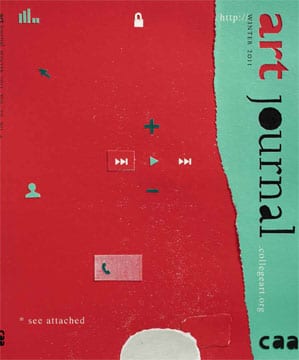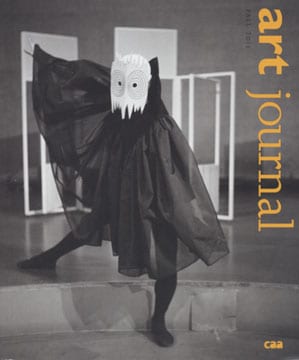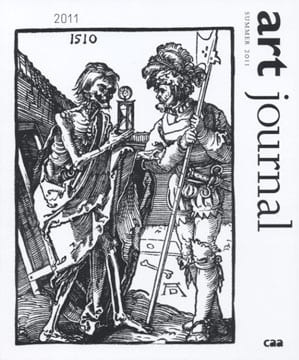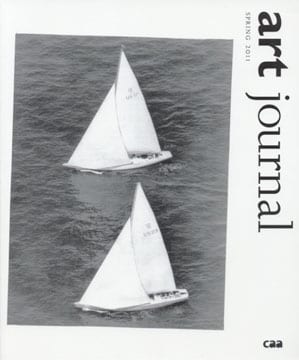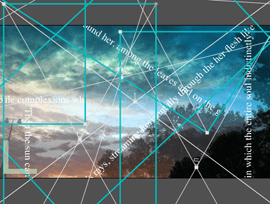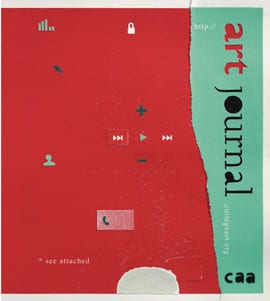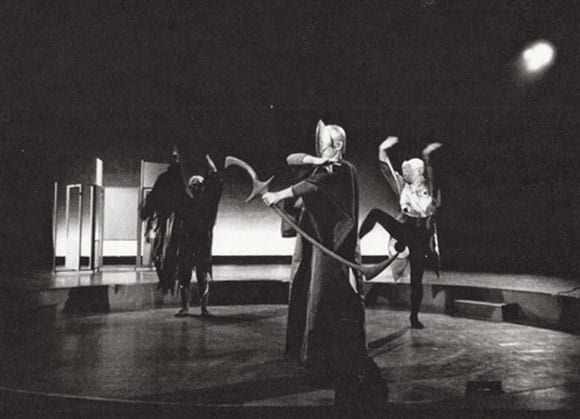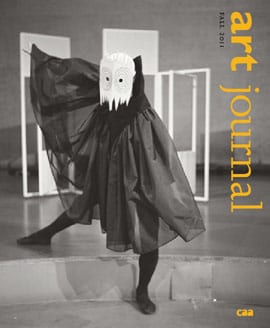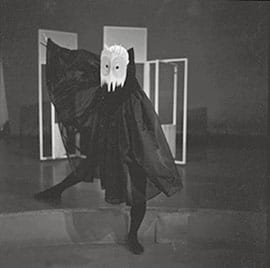In This Issue Katy Siegel, In Print, 5 Artist’s Project Matthew Brannon, Pressing the “Delete” button, not pressing the “Are you…
Fall 2011, Vol. 70, No. 3
In This Issue Katy Siegel, Reconstruction, 5 Centennial Essay Krista Thompson, A Sidelong Glance: The Practice of African Diaspora Art…
Summer 2011, Vol. 70, No. 2
In This Issue Katy Siegel, Making Time, 5 Centennial Essay Nora A. Taylor, Art without History? Southeast Asian Artists and…
Spring 2011, Vol. 70, No. 1
In This Issue Katy Siegel, Race to the Finish, 5 Artist’s Project Paul Sietsema, covers Centennial Essay Richard Shiff, Every…
The Hour Blew
By Amy Granat
The digital form still feels new to me, and slightly intangible when I use it. Nevertheless, I use it constantly—though its workings remain unclear. That confusion can be liberating. It creates layers and dimensions I don’t understand and cannot visualize. If I try, I see free-floating motion with no hard edges.
In Print
By Katy Siegel
At my first meeting as editor-in-chief, the Art Journal Editorial Board learned that due to fallout from the financial crisis of 2008–9, CAA could not afford to publish the journal as a quarterly—there would only be three issues in 2010, with reduced color and page count. It turns out that printing a magazine is, as these things go, a luxury.
The Binder and the Server
By Triple Canopy
At first a convenience, then quickly a conundrum: Of course we would publish on the internet. We came of age with the medium, it was our generation’s default. Plus, financially speaking, it remained—and remains, for now—a wheat-paste endeavor: nine dollars a month to hold down a domain name.
Fête in Venice
By Seth McCormick
Hiroko Ikegami’s The Great Migrator, which toward the end quotes Homi Bhabha on the subjects of postcolonial mimicry and hybridization, is itself something of a hybrid: part traditional monograph, part Foucauldian genealogy of contemporary art in the age of globalization.
Mining the Postwar Japanese Vanguard: Miwako Tezuka Speaks with Doryun Chong
By Miwako Tezuka and Doryun Chong
I specialize in contemporary Japanese art, which basically means post-1945. While doing some ground research, I realized that in the history of post-1945 Japanese art, most research was done on Gutai in the 1950s in the Kansai area, the western region of Japan, and I noticed this gap on the activities in Tokyo.
OCCUPOLOGY, SWARMOLOGY, WHATEVEROLOGY: the city of (dis)order versus the people’s archive
By Gregory Sholette
The archive, with its icy temperature and motionless repose, may seem like an unlikely place to begin thinking about Occupy Wall Street (OWS), a dynamic and still-unfolding phenomenon whose precise nature appears impossible to determine, let alone file away like a stack of dog-eared documents.
Reconstruction
By Katy Siegel
For several days in 2000, William Pope.L sat enthroned on a towering toilet, contemplating and quite literally consuming The Wall Street Journal, dusted with white powder and surrounded by the great American fluids—milk and ketchup. This performance grew from an earlier 1991 version, staged on the street, and the artist has reenacted the performance several times since, most recently at the New Museum in New York in 2010.
Experimentation and Tradition: The Avant-Garde Play Pierrot Lunaire by Jikken Kōbō and Takechi Tetsuji
By Miwako Tezuka
During the 1950s, after the devastating defeat in World War II, Japan exerted itself to regain political and economic confidence. Arts and culture played a key role in the country’s recovery: the image of a belligerent nation in the recent past needed to be replaced by a new impression of Japan as a peaceful nation of culture; the people were yearning for a return of their cultural life, or simply, entertainments; and, released from the straitjacket that suppressed free expression, artists quickly resumed their creative activities.

